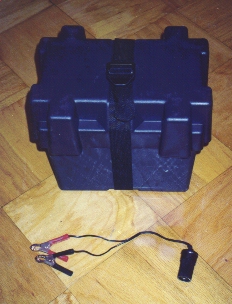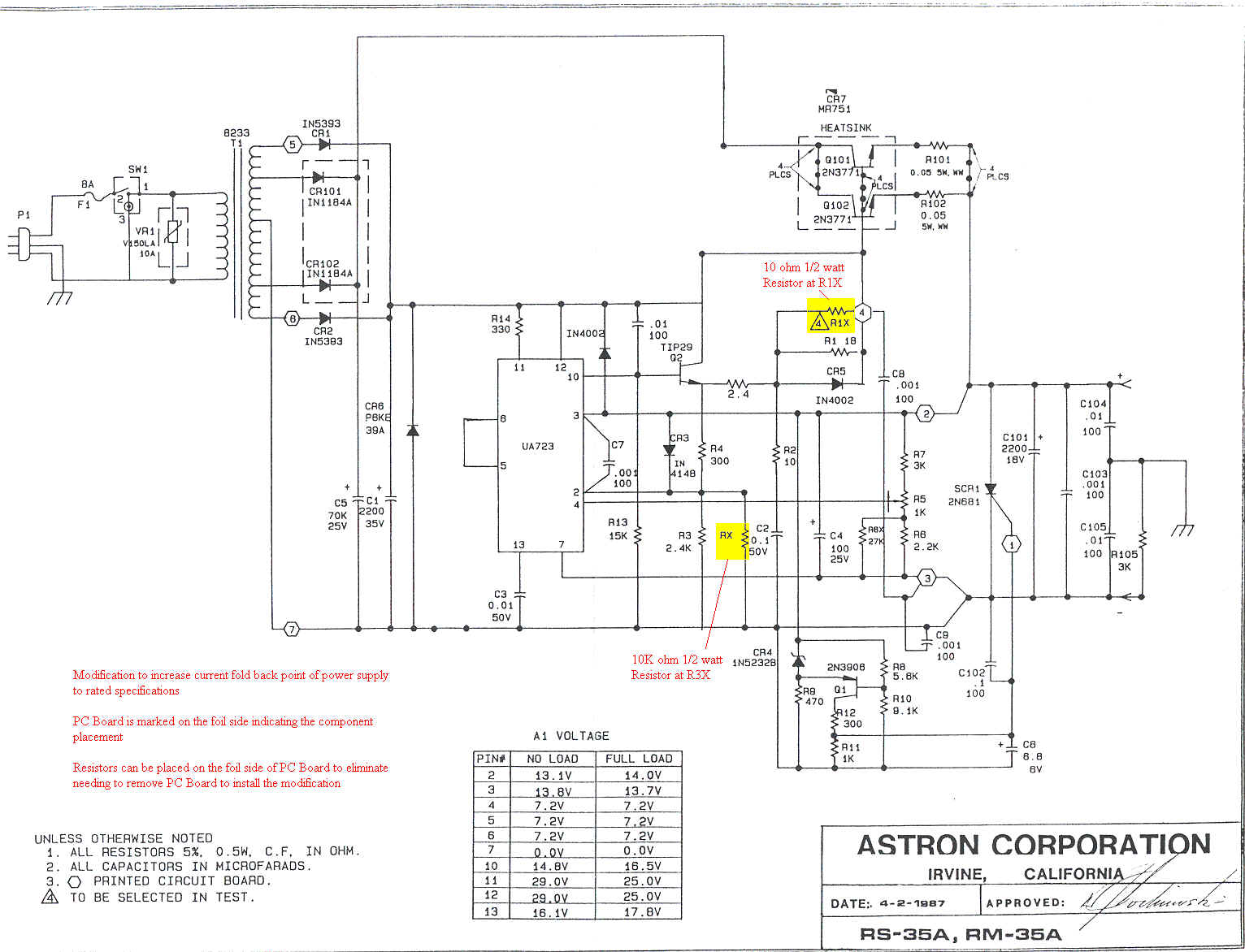We used portable generators and a construction similar to the one
described on this page. The original was constructed by Captain James
Maher, CAP, of Mississippi Wing. It was his idea, we here at the CAP
ES Resources website have merely capitalized upon it and described its
construction to you. In any case, the Emergency Power Supply Box (EPSB)
outputs 12 Volts of ripple-free power to supply your needs.
The real-life needs for emergency power are well documented.
Electrical storms, ice storms, floods, and hurricaines often bring down
the local power grid. If you need to operated electrical equipment
from a remote location for a relatively short period of time, this
project can be your supply. Additionally, if you're worried about Y2K
(even though you shouldn't) this might not be a bad project to build.
Additionally, we're sure this isn't a new idea. Using batteries as
a backup certainly isn't a revelation! As a simple project, however,
we feel that members will benefit from this page.
 As a bare minimum, you will need a marine battery box, some sort of
coupling device, and a lead-acid battery. When we say "marine" here,
we don't mean Uncle Sam's Misguided Children (USMC)--we mean marine as
in nautical--boats, in other words. Both the battery box and the
connecting devices can be found in the boat section of Wal-Mart, K-Mart,
or any good sporting goods store. The box should run about $8 and the
connector about $5. You'll obviously want some way to charge your
battery, so an appropriate charger is also required.
As a bare minimum, you will need a marine battery box, some sort of
coupling device, and a lead-acid battery. When we say "marine" here,
we don't mean Uncle Sam's Misguided Children (USMC)--we mean marine as
in nautical--boats, in other words. Both the battery box and the
connecting devices can be found in the boat section of Wal-Mart, K-Mart,
or any good sporting goods store. The box should run about $8 and the
connector about $5. You'll obviously want some way to charge your
battery, so an appropriate charger is also required.
With respect to the choice of batteries, a marine deep-cycle battery
is best. This is because the marine battery is designed to be run from
full capacity to zero or near zero. An automotive battery can work,
but it was designed to provide a high amount of power (amperage) for a
short period of time. It is also designed to be continuously charged
with a small amount of current. If you run an auto battery completely
dead, it may not charge back up. Most car owners have run across this
situation at one time or another! A marine battery can run anywhere
from $50 to $125, depending upon the capacity. On the upside, you may
have an old automotive battery in the garage.
Make sure that your charger is compatible with your battery (auto
battery chargers are not necessarily compatible with marine batteries)
and that the battery box you select will fit your battery.
Selection of the power coupling can be as simple or complex as you
desire. Pictured above is a simple cigarette-lighter style receptacle
attached to clips. To complete the project you only need to connect
the red clip to the positive (+) battery terminal and the black to the
negative (-) terminal. Run the wire outside the box through a vent
hole and strap the cover down. That's it! You now have emergency 12
volt power. A more complex setup could involve and all-weather 12V
receptacle firmly mounted to the outside of the enclosure. Another
option is to wire several receptacles parallel to the battery. An
astute project builder would also include a fuse inside of the box to
prevent against a short.
WARNING! A short or overcharge of the battery could cause the
battery to boil over, leak, or EXPLODE. Additionally, lead-acid
batteries naturally produce hydrogen gas as a byproduct. Keep the
battery in its ventilated container and avoid ignition sources such as
electrical sparks or open flame.
In addition to 12 volt power, you can also hook up a power inverter
that will supply 115V AC power. This is the same type of power that
your wall outlet provides. The amount of time this works will depend
upon the capacity of your battery. These inverters are available from
many commercial resources such as department stores or Radio Shack.
Shop around at your nearest Truck Stop--they often have very good deals
on all types of 12 volt equipment. Notice that most power inverters
utilize cigarette lighter sockets. Since this is also true of most
other 12V accessories, it is another good reason for choosing this type
of receptacle on your emergency power box.
We've only discussed using a cigarette lighter type receptacle for
our construction. This is because most people have power adaptors that
will fit a lighter receptacle. You can always substitute your favorite
connector for your power supply needs.
